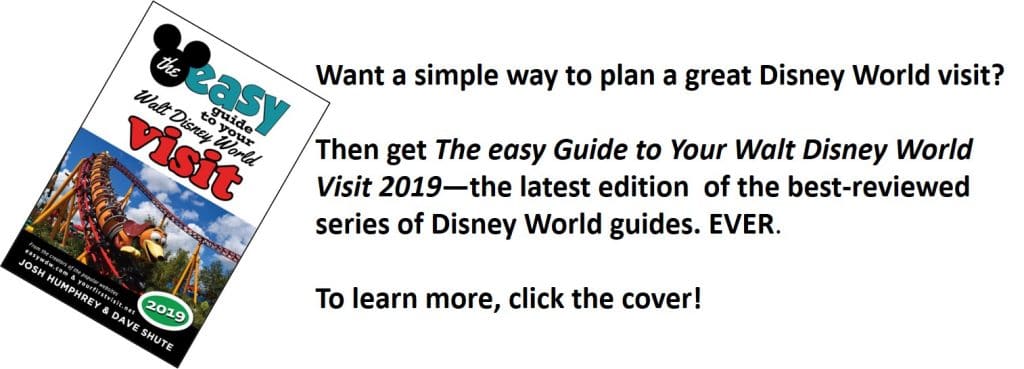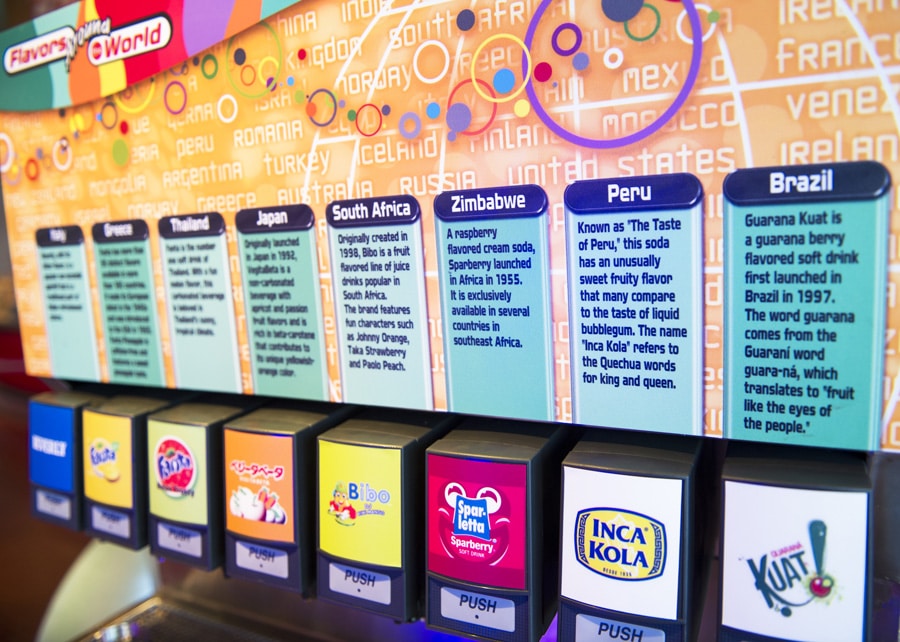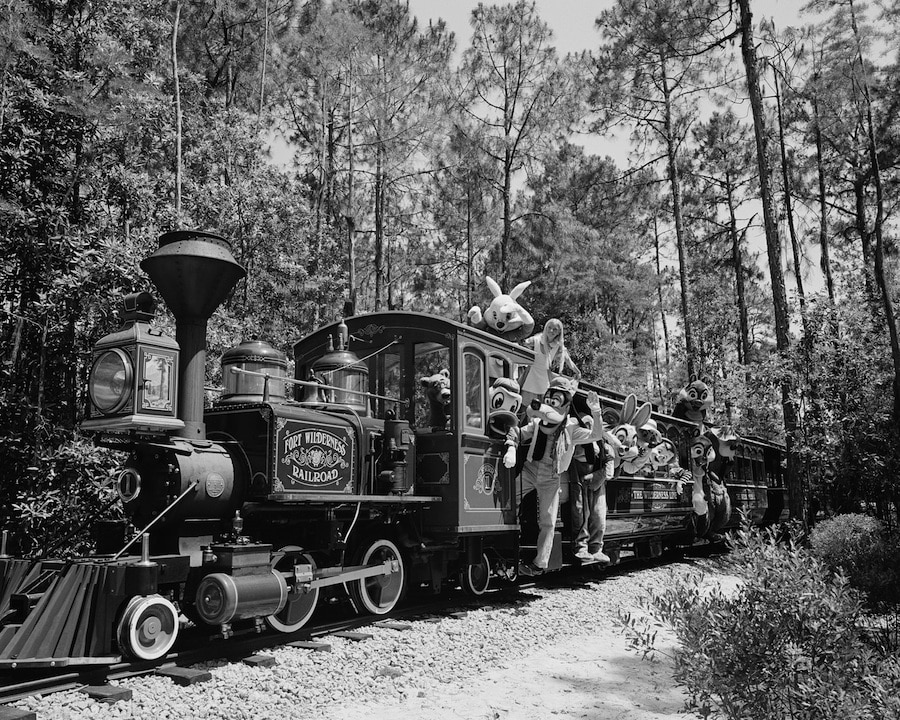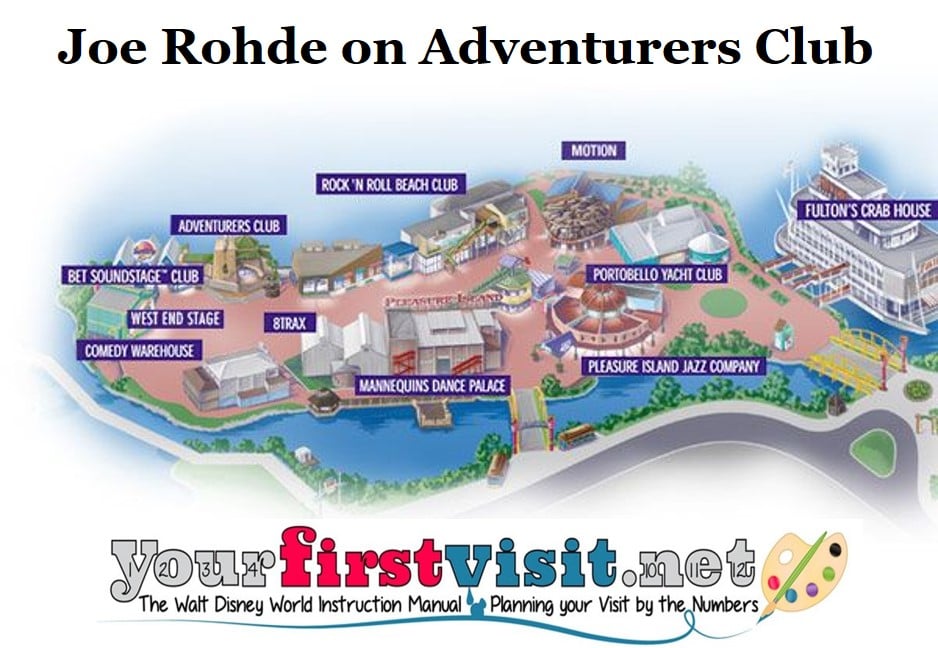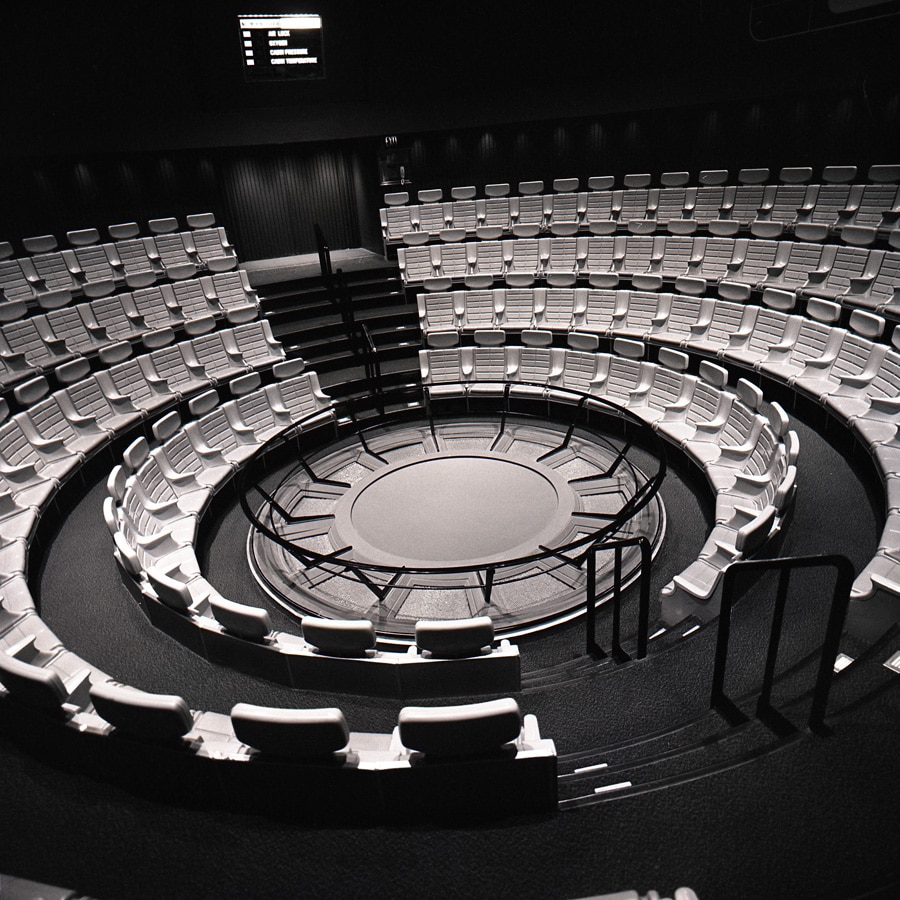Category — A Friday Visit with Jim Korkis
A Friday Visit with Jim Korkis: Disney’s Coronado Springs Resort
Welcome back to Fridays with Jim Korkis! Jim, the dean of Disney historians, writes about Walt Disney World history every Friday on yourfirstvisit.net.
DISNEY’S CORONADO SPRINGS RESORT–IN MODERATION
By Jim Korkis
Disney’s Coronado Springs Resort opened August 1, 1997 as a “moderate” priced resort, but with convention facilities and other enhancements aimed at business travelers not typical for the moderate level. By carefully doing things like having a lobby that employed millwork, vaulted ceilings, a mural and a fountain, the resort seemed more luxurious than it actually was.
It also included a fine dining restaurant (Maya Grill) that gave the impression of a more upscale resort.
“In a moderate hotel there is little demand for room service, a concierge or beauty parlor so you couldn’t justify those amenities,” said Boll Holland, who was Director of Design and Development for the resort.
“And some conventioneers see only business deals and don’t want too much of a ‘good time’ atmosphere. However, the Walt Disney World Resort market requires more amenities. It’s all very subjective and you must take into account the nature of convention business and meetings.”
So the convention area is more neutral in tone than the rest of the resort. “There was a struggle between Southwestern and Mexican styles,” explained Holland. “Southwest is more serious and acceptable for business while Mexico provides a fun and fanciful image.
“The architect, Graham Gund, is not a literal architect. His style is evocative and exterior details are never exactly the same as the historic precedent. He has a tendency to reconfigure historical architectural elements.”
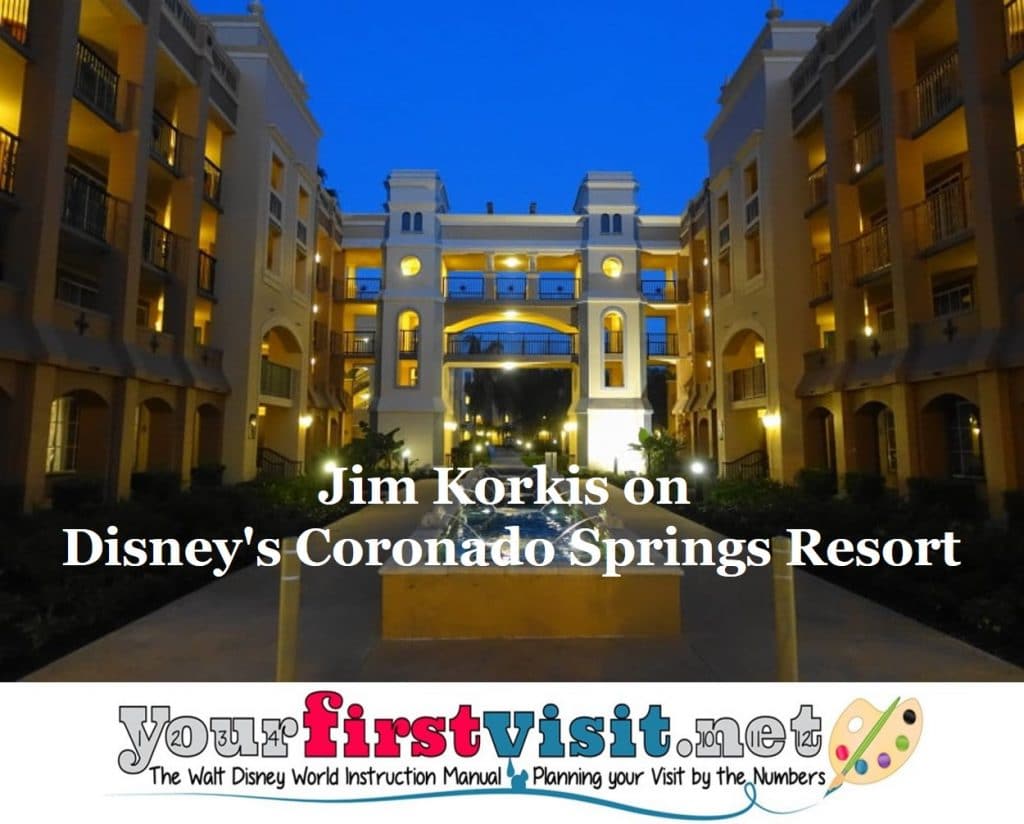
“In the rooms, the headboards are painted for texture instead of using wood molding. It all adds up when each room’s savings is multiplied many times. The contractor purchased everything up front – door frames, hardware, roofing and then stockpiled the materials in site trailers which protected the project from price increases over a two year period.
“He also used ‘just in time’ delivery for all ‘pilferable materials’, a significant cost containment step.”
Looking for savings in low-maintenance, fan-coil air conditioning units resulted in the elimination of extra ductwork systems, a more efficient unit with less maintenance for the operator, and millions of dollars in savings for Disney. The Coronado Springs team even sparked a competitive bidding war between commode manufacturers to obtain the optimum savings in toilets that provided water conservation, quiet flush and less stoppage.
Construction manager Dean Majors recalled, “The highest savings came from using Tunnel form system, a fast method of construction using two L-shaped metal forms to pour concrete room structures. The speed in which the rooms were built – twice as fast as regular construction – could not have been achieved without it. Lowering overall construction costs was a key factor in realizing the resort’s moderate price point.”
Executive Vice President of Architecture and Design Wing Chao said when the resort opened, “the theme is attractive. It’s something you can’t find in other places in America. We offer our guests the opportunity to escape to a different geographic and time period. This resort was purposely designed to perform at the same level as a luxury class hotel with the individual products of the same quality because the expectation level of our guests remains high.”
* * * * *
Thanks, Jim! My review of Coronado Springs begins here–I’ll post an update to it after my stay there at the end of July.
And come back next Friday for more from Jim Korkis!
In the meantime, check out his books, including his latest, The Unofficial Walt Disney World 1971 Companion: Stories of How the World Began, and Secret Stories of Walt Disney World: Things You Never You Never Knew, which reprints much material first written for this site, all published by Theme Park Press.
Follow yourfirstvisit.net on Facebook or Twitter or Pinterest!!
July 12, 2019 No Comments
A Friday Visit with Jim Korkis: Ice Station Cool and Club Cool at Epcot
Welcome back to Fridays with Jim Korkis! Jim, the dean of Disney historians, writes about Walt Disney World history every Friday on yourfirstvisit.net.
CLUB COOL AND ICE STATION COOL AT EPCOT
By Jim Korkis
Paperwork has been filed to remove Club Cool to make space for changes coming to Epcot. Club Cool first opened on November 14, 2005 as a location promoting Coca-Cola.
Disney has had a long relationship with Coca-Cola, since it was one of the original lessees at Disneyland in 1955 and became the sole soft drink provider for the Disney theme parks in 1982, when it started sponsoring the American Adventure pavilion at Epcot.
Club Cool sells Coca-Cola souvenirs as well as offering guests unlimited free samples of different variations of the classic beverage from around the world, very much like a much smaller version of the World of Coca-Cola location in Coke’s corporate headquarters of Atlanta, Georgia.
“Learn how the world refreshes itself!”
- Italy – Beverly — A bitter flavor but is a popular non-alcoholic aperitif.
- Greece – Fanta Pineapple — One of ninety different Fanta flavors, this caffeine-free offering has a sweet pineapple taste.
- Thailand – Fanta Melon Frosty
- Japan – Vegitabeta — A non-carbonated apricot and passion fruit mix
- South Africa – Bilbo — Fruit flavored lime juice
- Zimbabwe – Sparletta – Raspberry flavored cream soda
- Peru – Inca Kola — A sweet fruity flavor some say is similar to bubblegum.
- Brazil – Gurana Kuat — Guarana berry flavoreD
Originally the location opened as Ice Station Cool in June 1998 with a themed entrance near the Innoventions Fountain. It closed on June 6, 2005.
“Welcome to Ice Station Cool, the most refreshing place on Earth. Coca-Cola ‘Coolologists’ have been searching the globe non-stop for years, hoping to discover the origin of cool. This place is a recreation of one of the Coolologist’s recent Refreshus Maximus (Maximum Refreshment) expeditions,” stated a plaque.
The name of the location had been inspired by the 1963 Alistair MacLean novel Ice Station Zebra, about a British meterological station built on an ice floe in the Arctic Sea that was made into a popular 1968 movie. The idea came from the actual Ice Station Alpha and Ice Station Bravo that were established in the Arctic during The International Geophysical Year 1957-1958.
Another inspiration for the theming was the “The Iceman”, a 5,300 year old corpse discovered September 19, 1991 on the border of Italy and Austria (in the Alps) who had been buried in ice since the Neolithic Era and was completely preserved including items like his dagger and a copper axe.
“The story (of Ice Station Cool) is a group of archeologists made this discovery high in the sub-arctic,” said principal production designer Kerry Gilman. “But El Nino caused the ice to melt, so Refreshus Maximus (the name given by the expedition to the frozen Neanderthal) found reaching for a bottle of The Real Thing was brought to be preserved and studied at Epcot, the land of discovery.”
Guests entered a snow cave opening just past a snowcat vehicle and exterior misters exuding a fine, cold spray. Going through sliding doors and hanging freezer flaps, they find themselves in an insulated concrete tunnel featuring the remains (behind glass) of a recently discovered frozen Neanderthal from “a 30,000 year old highly civilized and now highly frozen refreshment culture” in a faux ice wall.
Throughout the 85 foot long cave, a snow machine pumped four tons of shaved ice per twelve hour period. That equals 240 cubic feet, roughly the equivalent of a ten by twenty foot room covered in a foot of ice. A two inch trough was placed below special floor grates to catch any melting flakes so that the area did not become flooded.
* * * * *
Thanks, Jim! And come back next Friday for more from Jim Korkis!
In the meantime, check out his books, including his latest, The Unofficial Walt Disney World 1971 Companion: Stories of How the World Began, and Secret Stories of Walt Disney World: Things You Never You Never Knew, which reprints much material first written for this site, all published by Theme Park Press.
Follow yourfirstvisit.net on Facebook or Twitter or Pinterest!!
July 5, 2019 No Comments
A Friday Visit with Jim Korkis: Spinning Disney’s World
Welcome back to Fridays with Jim Korkis! Jim, the dean of Disney historians, writes about Walt Disney World history every Friday on yourfirstvisit.net.
YOUR PERSONAL DISNEY LIBRARY (18)
By Jim Korkis
- Spinning Disney’s World by Charles Ridgway
Charlie Ridgway was hired at Disneyland in January 1963 as a publicity man for the park. In 1969 he was offered the job as Publicity Manager for Walt Disney World and re-located to Florida. He helped launch the opening of Walt Disney World in 1971 and EPCOT Center in 1982, as well as with special projects for celebrations such as Donald Duck’s 50th birthday in 1984. He retired in 1994 and was made a Disney Legend in 1999.
I knew and liked Charlie and interviewed him several times over the years. He was a gentle, generous, funny person and a wonderfully accurate source of information about Disneyland and early Walt Disney World.
I even shared part of one of those interviews with him about the opening of Walt Disney World in a previous yourfirstvisit column.
“Charlie defined Disney public relations,” stated Rick Sylvain, who was hired by Ridgway to join Disney’s public relations team in 1995. “He never lost his childlike enthusiasm for all things Disney. That enthusiasm was infectious. As a new recruit, you had two options: try to keep up with him or get out of the way.
“Disney doesn’t throw around accolades lightly. So being named a Disney Legend and having his name on a window of Main Street U.S.A. speaks to the esteem Disney held for Charlie.”
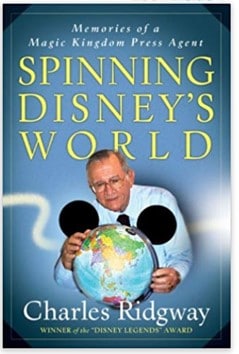
The book is filled with stories that no one else has ever told, including Charlie planning the 80th birthday party of journalist Lowell Thomas at WDW in 1972 that included World War I Ace Eddie Rickenbacker, World War II’s General Jimmy Doolittle, inspirational speaker Norman Vincent Peale and more.
Ridgway writes: “At the banquet that night (at the Contemporary), Lowell showed his home movies, things like Tom Dewey playing softball at Lowell’s farm while a smiling Franklin D. Roosevelt looked on from his open touring car.” Lowell moved from the Contemporary to the Polynesian (“which was his favorite”) for three more days.
Try to find that story anywhere else or “We flew into Orlando several times (on Walt’s plane 234MM) during construction of Walt Disney World. We always landed at Herndon Field instead of McCoy (later Orlando International) where they regularly announced ‘Mickey Mouse 234 approaching’. Then after landing, it was ‘The Rat is on the ramp’.”
What about the story of Walt and Bob Hope entertaining the U.S. Olympic team on its way to Japan in 1964 on a riverfront stage in Frontierland at Disneyland? When the little train from Nature’s Wonderland let out its shrill whistle unexpectedly, Hope quipped, “Walt, your waffles are ready”.
Even with all the gems in the book, Charlie had enough for another book and I kept urging him to write a sequel for almost a decade, until his death in 2016. Unfortunately, like other Disney Legends Jack Lindquist, Marty Sklar and John Hench who were in the middle of new books when they passed away, the same situation happened for Charlie.
Fortunately, this book does exist and shares with us all a different perspective and new information on both Disneyland and Walt Disney World.
* * * * *
Thanks, Jim! And come back next Friday for more from Jim Korkis!
In the meantime, check out his books, including his latest, The Unofficial Walt Disney World 1971 Companion: Stories of How the World Began, and Secret Stories of Walt Disney World: Things You Never You Never Knew, which reprints much material first written for this site, all published by Theme Park Press.
Follow yourfirstvisit.net on Facebook or Twitter or Pinterest!!
June 28, 2019 No Comments
A Friday Visit with Jim Korkis: Fort WIlderness Railroad
Welcome back to Fridays with Jim Korkis! Jim, the dean of Disney historians, writes about Walt Disney World history every Friday on yourfirstvisit.net.
FORT WILDERNESS RAILROAD
By Jim Korkis
With the new Disney Vacation Club Resort Reflections being built there, changes are coming to the Fort Wilderness Resort and Campground that opened on November 19, 1971.
However, over the decades many things changed at the Fort. When it opened, it was much larger than most campgrounds at the time, so trams, bicycles and buses provided guests with transportation options to get where they needed to go.
From the very beginning, there were plans for a “campground railroad” to provide transportation and add to the rustic “theming” of the area. The official opening and dedication ceremony of the Fort Wilderness Railroad was January 1, 1974.
The railroad was considered a Disney attraction, and was promoted accordingly on marketing material, even charging guests a minimal fee fifty cents per day (later a dollar) to use it. This made Fort Wilderness the only Disney resort, so far, that had an attraction. It lasted roughly six years until February 1980.
The railroad consisted of four steam trains, each pulling five cars, around a circular route through the campground at a maximum speed of ten miles an hour. Each engine ran on steam and used diesel fuel to stoke the fire. The track was approximately twice the length of the track at the Magic Kingdom Park.
Each train was roughly about 150 feet long and could seat up to 90 guests.
The trains were smaller than the ones at the Magic Kingdom and were based on the traditional Baldwin “plantation locomotives” popular in the Hawaiian Islands.
The railroad used a smaller gauge track (30 inches between the rails on the track) than at the Magic Kingdom (36 inches), which may have influenced people into thinking that the train itself was scaled smaller, but it was full-sized.
Unlike every other Disney train (even the ones operating on Big Thunder Mountain Railroad), none of the engines were ever named. They were only numbered, and each of the four engines had a distinctive icon on the headlamps: elk, bison, deer and ram.
In the beginning, the train ran from 8 a.m. to 9 p.m. everyday causing some complaints from guests who disliked the fact that at all grade crossings the extremely loud whistle would sound. Eventually, the trains would cease operation around 5 p.m., eliminating that problem.
The heyday of the railroad was the opening of River Country in May 1976, where the train became the favored mode of transportation. New additions had to be made to the train cars including rubber floors, because of the dripping wet guests who had enjoyed Disney’s first water park.
The Disney Company never gave an official explanation or even an official closing date. The railroad was simply put on “hiatus” early in 1980.
Some claimed that safety was an issue and that the nearness of the tracks to the guests made Disney Legal fearful. Some claimed that the train produced too much noise and it disturbed guests. Some claimed that it was just too expensive to operate and could never recover its costs.
The bottom line is that the track was not laid correctly in the first place, so that even with several attempts to make adjustments the basic problem still existed that could not be overcome without a hefty investment.
After years of being outside and subjected to Florida heat and humidity, the engines and the coach cars were sold off to private collectors who restored them. All of the engines are now in California. Former Disney Executive John Lasseter has an engine and a couple of coach cars in his backyard railroad in Northern California.
Two of the coach cars were modified and placed temporarily at the entrance of Pleasure Island as ticket booths; one of those coaches is now at the front of Typhoon Lagoon, and the other was auctioned off. Four of the cars and 3,000 feet of track were donated to the Brevard Zoo in Melbourne, Florida, but over the years those coaches also found other homes.
* * * * *
Thanks, Jim! While you don’t have to be a railroad fan to be a Disney World fan, it helps. For those who are both, this book is in my library:
For more on Fort Wilderness, based on my nine stays there, see this. And come back next Friday for more from Jim Korkis!
In the meantime, check out his books, including his latest, The Unofficial Walt Disney World 1971 Companion: Stories of How the World Began, and Secret Stories of Walt Disney World: Things You Never You Never Knew, which reprints much material first written for this site, all published by Theme Park Press.
Follow yourfirstvisit.net on Facebook or Twitter or Pinterest!!
June 21, 2019 1 Comment
A Friday Visit with Jim Korkis: Joe Rohde on Adventurers Club
Welcome back to Fridays with Jim Korkis! Jim, the dean of Disney historians, writes about Walt Disney World history every Friday on yourfirstvisit.net.
JOE ROHDE TALKS ADVENTURERS CLUB
By Jim Korkis
I attended a cast member presentation April 3, 2006 where Imagineer Joe Rohde was talking about Disney’s Animal Kingdom and in particular the philosophy behind the Yeti in Expedition Everest. During the Question and Answer session following his talk, he talked about his work on the Adventurers Club.
Rohde: “I’ll tell you the whole story. So, Rick Rothschild was in charge of everything on Pleasure Island, as the chief show producer of Pleasure Island. And I had had a party at my house and he had come over to this party and my house is full of wild stuff: masks, and carvings and weird things. And so he called me in Monday morning and goes, ‘I have a project you should work on. You should work on this Adventurers Club concept.’
“The few of us who were working on it had tremendous freedom to do what we thought was cool. To call people up. Make deals. Go places. See things. Make things happen. And the Adventurers Club happened under those circumstances.
“I hope it’s not some kind of deep-rooted psychological thing; but these two projects, Animal Kingdom and Adventurers Club, both of them have this oppositional kind of point of view. Like we’re gonna deliberately do something that is not the thing that you commonly see around you.
“So, with the Adventurers Club the idea was: People have been in the parks all day long. And they have been programmed, by being in these parks, to expect certain things to be true. For example: If an inanimate object does something, it’s gonna do that same thing again later. Right?
“People think, ‘Nothing is gonna happen in this environment except the things that are gonna happen. This environment is on a loop. It will stay like this for an hour, for a day and for a year it will retain its sameness. It’s built to do that.
“Everything in this environment was designed and made by designers out of fiberglass and plastic and things. So nothing in this environment is made of real things. Everything in this environment is made, designed and built.” And I don’t mean this in a negative way. It’s just what you know.
“So we wanted to mess with all of that with the Adventurers Club, right? And create an environment where you’d walk into the environment and first you’d think, “Wait a minute. This stuff is like real. That…that’s like really a real thing. Is that fake? I think that’s real!”
“So, the most real stuff’s where you can get right up to it and go, “I swear that is real.” Then the second thing was that things would not repeat the same way. . The Adventurers Club would know that you were there and things would change based on the fact that you were there. And if it didn’t talk to you, it would talk to somebody. So, you know, inanimate things would come to life but they would not be on cycles.
“If you think back to the early, early Adventurers Club to where the performers’ outfits were as close as we could get them to real clothes people might wear in everyday life. So, when Hathaway Browne would come sit at the bar with somebody, it would be like a minute before you’d go, ‘Wait a minute. This guy is like not real. I thought this guy was real.’
“It plays against expectations that have been set up by other experiences, right? And that’s kind of how it was meant to work.
“I don’t go very often, because you know you wanna mess with it and tweak with it and change. But I check in on it every so often and I think it has endured fairly well, really. You think about it, it’s a theatrical performance running for almost twenty years. But it was deliberately constructed to be the counterpoint to the more programmed kinds of things you would experience in the parks.”
* * * * *
Thanks, Jim! And come back next Friday for more from Jim Korkis!
In the meantime, check out his books, including his latest, The Unofficial Walt Disney World 1971 Companion: Stories of How the World Began, and Secret Stories of Walt Disney World: Things You Never You Never Knew, which reprints much material first written for this site, all published by Theme Park Press.
Follow yourfirstvisit.net on Facebook or Twitter or Pinterest!!
June 14, 2019 No Comments
A Friday Visit with Jim Korkis: To the Moon and Beyond
Welcome back to Fridays with Jim Korkis! Jim, the dean of Disney historians, writes about Walt Disney World history every Friday on yourfirstvisit.net.
FLIGHT TO THE MOON AND MISSION TO MARS
By Jim Korkis
This year marks the 50th anniversary of the Apollo 11 Moon Landing on July 20, 1969, but like many things, Disney was there first, not only with the Tomorrowland television episodes from the 1950s but also with attractions in the Disney theme parks.
Disneyland opened in July 1955 with an attraction called Rocket to the Moon that simulated a trip around the moon, and when the New Tomorrowland debuted there in 1967, the attraction was redesigned as Flight to the Moon. This revised version opened at Walt Disney World on December 24, 1971.
Inside were two “Lunar Transports” theaters meant to represent the passenger cabins in a space ship. The pre-show allowed guests to see pre-launch activity in Mission Control, “the nerve center of Disneyland’s spaceport”. Eight audio-animatronics male figures were seated along two banks of computers moving their heads and arms.
The one standing figure who talked to the audience was Control Center Director Mr. Tom Morrow. Screens behind Mr. Morrow showed some NASA footage, new projects that were being prepared, and the preparations for Flight 92 (that the guests would soon be boarding as their flight), as well as the famous footage from runway 12 where a clumsy albatross came in for an awkward landing that tripped security alarms.
Once in the theater, the upper ceiling and lower floor projection screens showed some of the same material from the original attraction with flares lighting up the dark side of the moon and being caught in a meteoroid shower on the return to the Earth. However, during the nine minute moon flight, two screens mounted on opposite sides of the cabin’s walls showed a new “live” telecast from the moon’s surface of astronauts gathering ore samples, demonstrating weightlessness and showing off the nearby moon base.
However, even as it was being installed at Walt Disney World, it was obsolete even though publicity stated “Disney called on NASA experts to provide data. The new show is as scientifically authentic, accurate and up-to-date as possible”. NASA had purposely withheld information including the actual design of the moon landing vehicle.
In March 1975, the new version entitled Mission to Mars, opened but it was not just a simple overlay at an existing location.
The entrance and holding areas were completely redone. More importantly, a female audio-animatronics character took over one of the seats in the Mission Control pre-show.
Mr. Tom Morrow was replaced by the audio-animatronics bespectacled Mr. Johnson (who was voiced by actor George Walsh, who had previously supplied the voice for Mr. Morrow) discussing space travel and the Mars vehicle. The new show included Mars footage shot by a NASA satellite.
Of course, there was no base on Mars for astronauts to transmit a “live” broadcast to the guests as was done on the “near-future” moon voyage. So that section was changed to images from probes launched from the rocket and narrated by Third Officer Collins voiced by Peter Renoudet. Those probes showed details of the surface of the planet including canyons and mountains.
Some things that had delighted guests in the previous show remained including the footage of the albatross tripping the security alarms and the danger from a meteoroid shower forcing the ship’s immediate return to earth.
The theaters remained the same as the earlier incarnation with four tiers and screens on the top and bottom. However, when the moon came into view, the ship jumped into “hyper-space penetration” that brought Mars into range.
Some guests had lost interest in real space flights so weren’t as interested in this new destination adventure, and attendance quickly dwindled and it was closed in October 1993. The ExtraTERRORestrial Alien Encounter opened in the space June 1995 and was replaced by Stitch’s Great Escape on November 2004.
* * * * *
Thanks, Jim! And come back next Friday for more from Jim Korkis!
In the meantime, check out his books, including his latest, The Unofficial Walt Disney World 1971 Companion: Stories of How the World Began, and Secret Stories of Walt Disney World: Things You Never You Never Knew, which reprints much material first written for this site, all published by Theme Park Press.
Follow yourfirstvisit.net on Facebook or Twitter or Pinterest!!
June 7, 2019 No Comments


